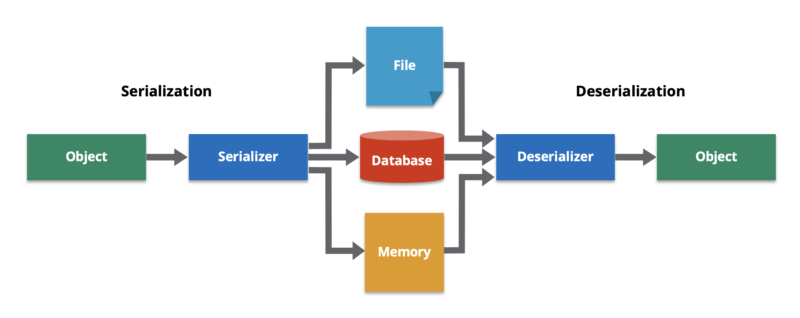What Is Deserialization?
Deserialization is the process of reconstructing a data structure or object from a series of bytes or a string in order to instantiate the object for consumption. This is the reverse process of serialization, i.e., converting a data structure or object into a series of bytes for storage or transmission across devices. To fetch an object state over a wire or read it from persistent storage, a system must be able to deserialize it from raw bytes.


Why Do You Need Deserialization in Distributed Systems?
Distributed systems often share objects across separate nodes, so objects must be delivered over the wire. Since objects tend to consist of many parts, it can be time-consuming to write code that handles the delivery of each individual part. Serialization enables us to save and transmit the state of an object in a standardized way. Deserialization then enables us to recreate objects after they have been serialized for transmission over the wire, between applications, through firewalls, and more.


